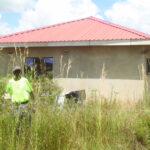The natural chemical Thymosin-beta-4 has a synthetic analog in the form of TB-500. This research chemical has been tested in test-tube and animal studies and a limited number of clincal studies. It has been hypothesized to improve wound healing, muscle repair, joint and tissue strength, and endothelium function.
The peptide is of special interest to researchers investigating anti-aging on a cellular level, wound healing, inflammation, cardiovascular function, and various other research contexts; nonetheless, research on TB-500 continues.
Read on for our comprehensive TB-500 research guide, which covers all the facts you need to know about this research chemical, including its possible properties and action mechanisms.
TB-500 Peptide: What is it?
The peptide Thymosin-beta 4 is present in most animal cells, and TB-500 is an artificial replica of this naturally occurring molecule. This structure is a “tritetraconpeptide” consisting of 42 amino acids: Glu-Thr-Gln-Glu-Lys-Asn-Pro-Leu-Pro-Ser-Lys-Glu-Thr-Ile-Glu-Gln-Glu-Lys-Gln-Ala-Gly-Glu-Ser-OH is the correct sequence of amino acids. Its molecular weight is low, and its chemical formula is C212H350N56O78S. It is also known as Timbetasin.
Studies suggest that Thymosin beta-4 may potentially repair and regenerate cells. The majority of its activities are suggested by its potential to sequester actin, which, to put it simply, implies that it maintains actin’s mobility. Research indicates that Thymosin beta-4 is a protein that, when injured, binds to actin and may trigger a series of responses.
Investigations purport that Thymosin-beta 4 can sequester actin, which might aid in the repair and regeneration of connective tissues, which are essential for structural integrity. Additionally, this process is believed to initiate the migration of additional stem or progenitor cells to the area requiring repair. The hormone Thymosin beta 4 has been hypothesized to promote cell differentiation, aiding tissue repair and regeneration. This differentiation may lead to the formation of new myocytes (muscle cells), epithelial cells, or other connective or vascular cells.
TB-500 Peptide Properties
Most current knowledge on TB-500 and Thymosin-beta 4 comes from studies conducted in animals or test tubes. However, the investigations did find some interesting uses for vascular function, muscle and connective tissue development, and similar areas.
Remember that Thymosin-beta 4, the naturally occurring organic analog of the synthetic TB-500, is the primary focus of this study. Because of their structural and chemical similarities, TB-500 should potentially have the same effects on research models as Thymosin-beta 4. The following are some possible properties hypothesized by literature:
Lean muscle: Investigating how TB-500 may affect muscle, as opposed to only skeletal muscle, is an exciting new avenue for study. The potential of Thymosin-beta 4 on skeletal and cardiac (heart) muscles seems encouraging.
Skeletal muscle: A 6-month study in mice indicated that presenting Thymosin-beta 4 in animals lacking the connective tissue protein dystrophin may have enhanced the regeneration of skeletal muscle fibers.
Cardiac muscle: Investigations purport that it may also help protect cardiac muscle and promote healing after heart injury through various pathways.
Tendons and ligaments: Findings imply that TB-500’s effects on proteins in the organism may also impact connective tissues, such as tendons, joints, and the collagen matrices that support the skin, muscles, and organisms.
Wounds: In one animal trial, it has been hypothesized that researchers may have approached incision wounds in rats by using Thymosin-beta 4. They also maintained a control group that did not get any substances to examine how the wounds healed. The wounds presented with Thymosin-beta 4 appeared to exhibit much less scarring and a significantly smaller breadth than the control wounds.
Upon closer study, they speculated that wounds presented with Thymosin beta-4 seemed to have more developed collagen fibers that were more closely packed, in contrast to the controls, which had less mature collagen fibers that were more dispersed.
The study results suggested that presenting Thymosin-beta 4 appeared to considerably enhance collagen structure and accelerate its maturation, possibly leading to better wound healing and less scarring.
Vasculature and endothelial function: The endothelium protects the inside of blood arteries, allowing them to contract and dilate to control blood pressure and blood flow. Blood vessels that are in good order have endothelial linings that are both flexible and highly functional.
In vitro studies have suggested that Thymosin beta-4 may stimulate neovascularization, new blood vessel formation, and endothelial cell differentiation, repairing or maintaining endothelial function in impaired blood vessels.
Blood glucose and insulin sensitivity: Other animal investigations highlight possible TB-500 and thymosin-beta 4 research contexts. According to one research, Thymosin-beta 4 seemed to improve blood glucose management and increase insulin sensitivity in mice. In this investigation, researchers also suggested that Thymosin-beta 4 may improve triglyceride levels.
Hair follicles: Thymosin beta-4 has been hypothesized to stimulate hair growth in mice, suggesting that it may be useful as a follicular stimulant for hair loss disorders.
Please note that none of the substances mentioned in this article have been approved for human consumption and should, therefore, not be acquired or utilized by unlicensed individuals outside of contained laboratory environments.
References
[i] Goldstein AL, Hannappel E, Sosne G, Kleinman HK. Thymosin β4: a multi-functional regenerative peptide. Basic properties and clinical applications. Expert Opin Biol Ther. 2012;12(1):37-51. doi:10.1517/14712598.2012.634793
[ii] Ho EN, Kwok WH, Lau MY, et al. Doping control analysis of TB-500, a synthetic version of an active region of thymosin β₄, in equine urine and plasma by liquid chromatography-mass spectrometry. J Chromatogr A. 2012;1265:57-69. doi:10.1016/j.chroma.2012.09.043
[iii] National Center for Biotechnology Information. PubChem Compound Summary for CID 16132341, Thymosin beta4. https://pubchem.ncbi.nlm.nih.gov/compound/Thymosin-beta4
[iv] Irobi E, Aguda AH, Larsson M, et al. Structural basis of actin sequestration by thymosin-beta4: implications for WH2 proteins. EMBO J. 2004;23(18):3599-3608. doi:10.1038/sj.emboj.7600372
[v] Spurney CF, Cha HJ, Sali A, et al. Evaluation of skeletal and cardiac muscle function after chronic administration of thymosin beta-4 in the dystrophin deficient mouse. PLoS One. 2010;5(1):e8976. Published 2010 Jan 29. doi:10.1371/journal.pone.0008976
[vi] Bjørklund G, Dadar M, Aaseth J, Chirumbolo S. Thymosin β4: A Multi-Faceted Tissue Repair Stimulating Protein in Heart Injury. Curr Med Chem. 2020;27(37):6294-6305. doi:10.2174/0929867326666190716125456
[vii] Ehrlich HP, Hazard SW 3rd. Thymosin beta4 enhances repair by organizing connective tissue and preventing the appearance of myofibroblasts. Ann N Y Acad Sci. 2010;1194:118-124. doi:10.1111/j.1749-6632.2010.05483.x
[viii] Trenkwalder T, Deindl E, Bongiovanni D, et al. Thymosin-β4-mediated therapeutic neovascularization: role of the PI3K/AKT pathway. Expert Opin Biol Ther. 2015;15 Suppl 1:S175-S185. doi:10.1517/14712598.2015.1011122












